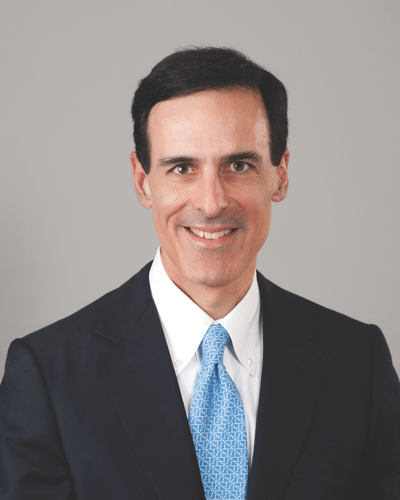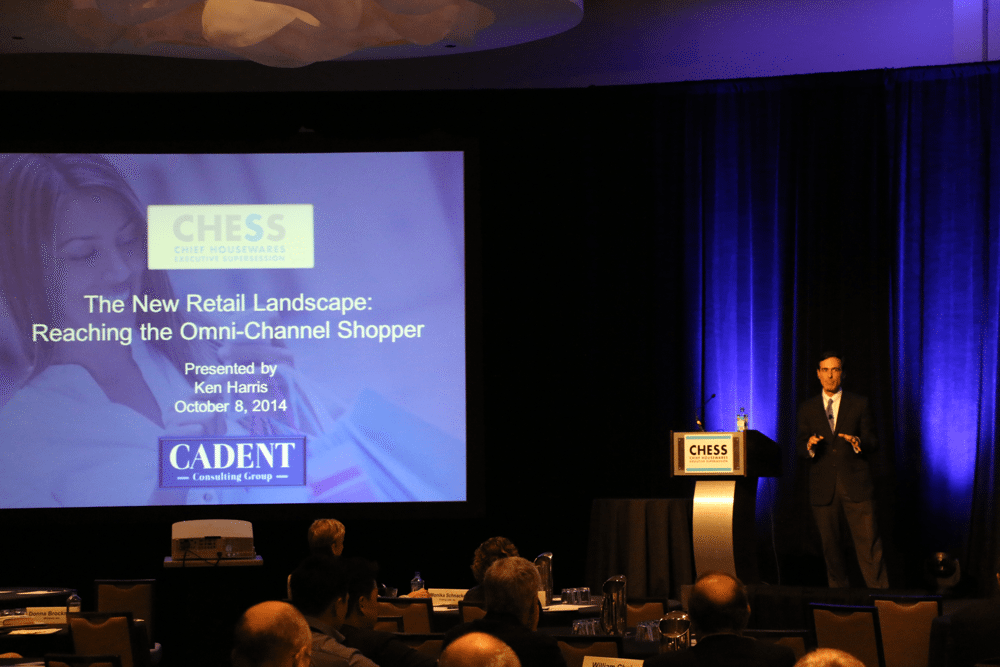Day Two: Session Four
The New Retail Landscape: Reaching the Omni-Channel Shopper
Ken Harris, Managing Partner, Cadent Consulting Group
As manufacturers and conventional retailers turn their attention and resources toward digital commerce, a critical question needs to be asked: What is the best path for your company if 95-99% of your business is through conventional channels? Companies should focus on digital and online pursuits as part of an overall strategy.
 Ken Harris explored how to balance new approaches to conventional channels without losing the edge on digital initiatives. He described case studies of strategies and tactics used by successful consumer products companies in a variety of relevant industries including housewares.
Ken Harris explored how to balance new approaches to conventional channels without losing the edge on digital initiatives. He described case studies of strategies and tactics used by successful consumer products companies in a variety of relevant industries including housewares.
As the final speaker of CHESS, Harris deftly built upon two days packed with content. He summarized information provided earlier on the complexities of social media and offered action points for the audience to apply once they returned home. He recalled how Eric Greitens invited people to shift their course by 2% to change their lives and reminded us that you don’t have to be experts on day one—the first steps and decisions each day build strength. For example, IHA shifted course to speak directly to consumers by launching an interactive website where everyone present could participate and benefit by leveraging IHA and their brands and products.
Technology available to us today enables our access to consumers more than ever before. We are connected all the time and carve out time to unplug and turn off. Digital marketing and strategy are at work 24/7. Most brick and mortar companies use traditional modes of communication outbound from their central core: media, websites, mobile apps, email marketing and TV. We’ve heard that we need to create a unified message, yet how do you create one message that differs for each consumer we touch?
Omni-channel marketing is a customer-driven relationship with multiple, ubiquitous and interrelated modes of communication—one channel with many touch points. Content is individualized, responses are measured, unit and dollar velocity performances are enhanced by visitor clicks, coupons and discounts and Facebook shares. The formerly linear path to purchase is now a circular one with many detours to build brand loyalty and advocacy.
Harris described examples of omni-channel marketing such as unexpected personal care products placed in apparel displays to align brands and experiences and a mother using her phone, home computer and tablet over several days to shop for children’s shoes. Most consumers now “showroom” and “webroom,” and have preferred channels for different occasions. On average customers engage with 11.4 pieces of information before purchasing. What customers see in one channel informs what they buy in another, so investing in one sees ROI in other channels.
Business is much more complex today than it was 20 years ago. One example of a housewares brand whose omni-channel marketing illustrates many creative directions is a tableware company that created a visual tabletop on its website, which also offers entertaining tips, so consumers could select products to set a beautiful table and share with their friends.
Big data is overwhelming; we need smaller data with big answers. In order to keep up with consumer expectations, marketers must move from multi-channel to omni-channel. Assess where your business is today and choose the most rewarding direction. Assess online and bricks and mortar equally, with no prejudice. The online route isn’t easy and you will need to fortify your organization just as you would to build more bricks and mortar stores.
A lively conversation followed with audience questions about predictions and forecasts to take the group through the coming year.
The next CHESS conference will take place at the same Loews Chicago O’Hare hotel and during the same week. Plan now to attend the 2015 CHESS on October 6 and 7.



